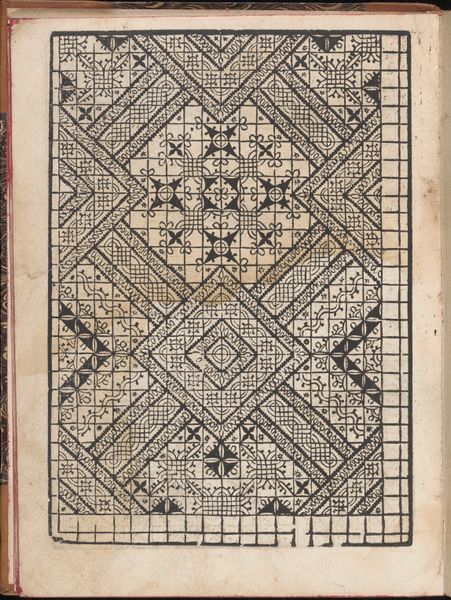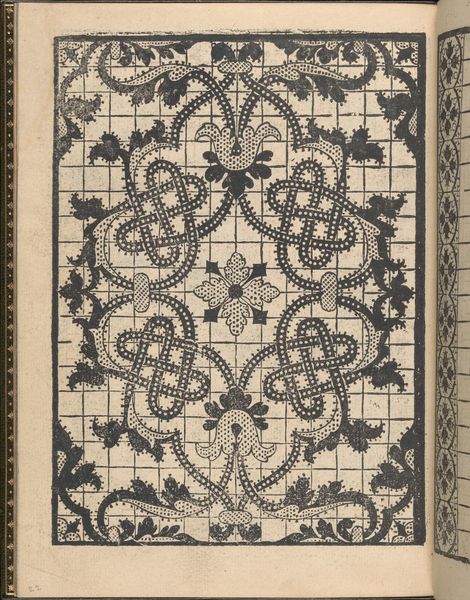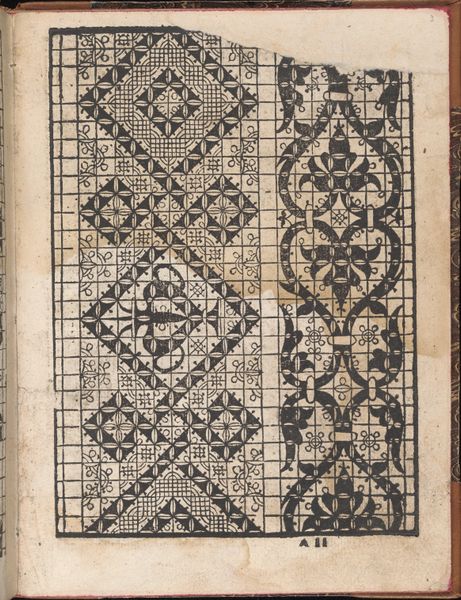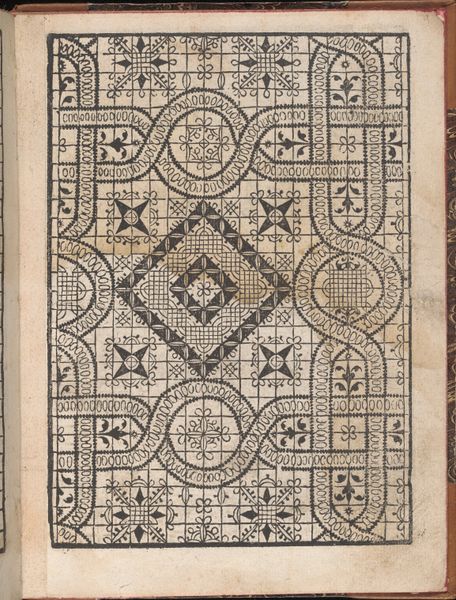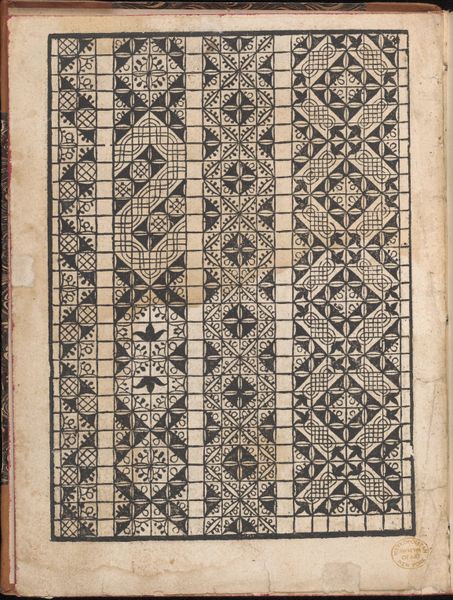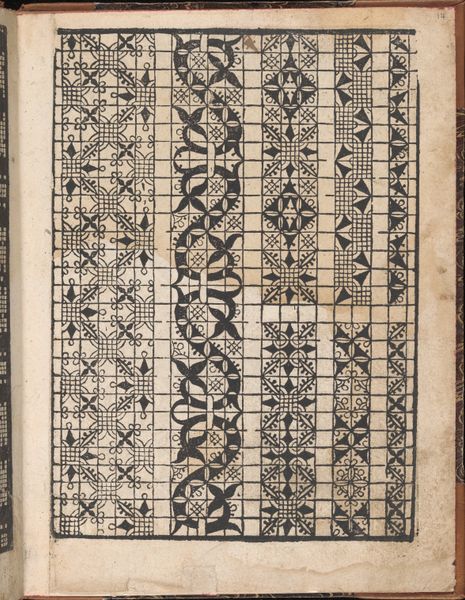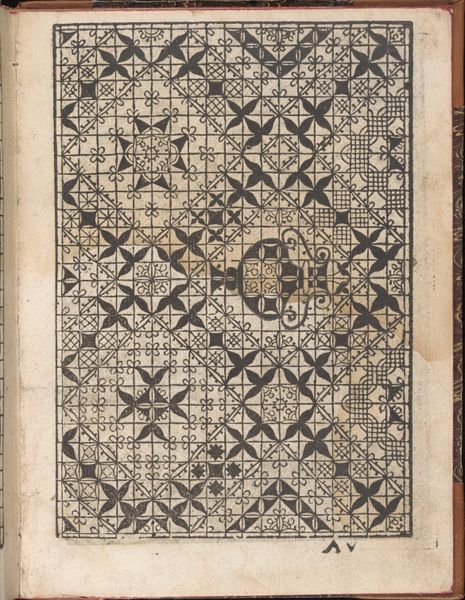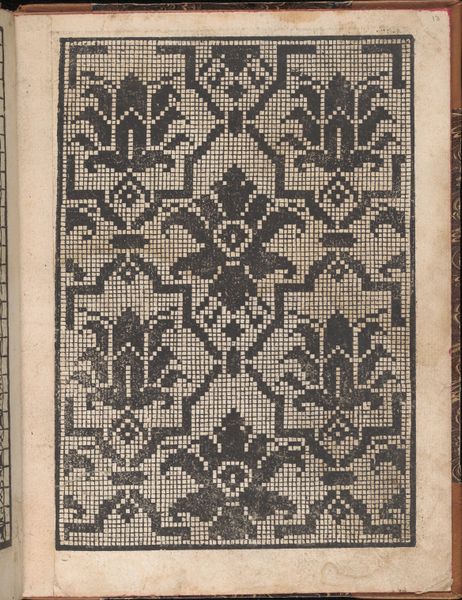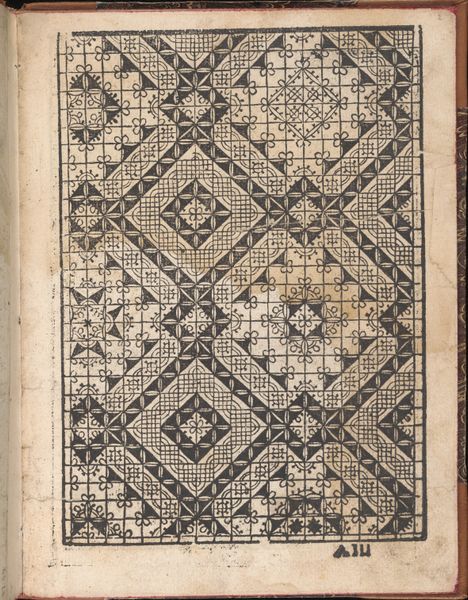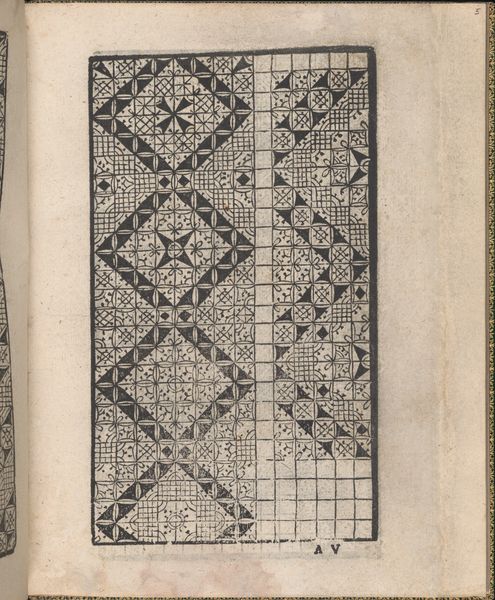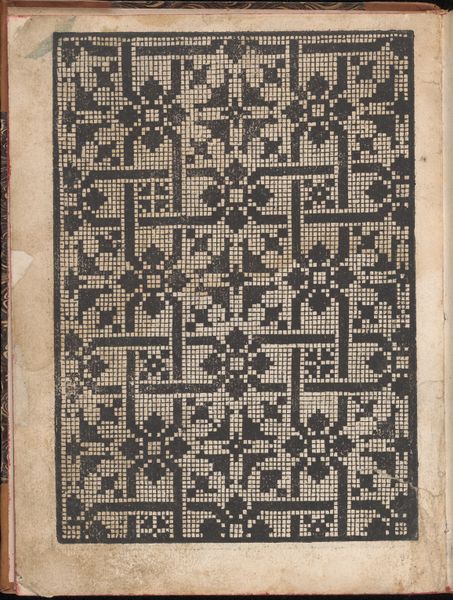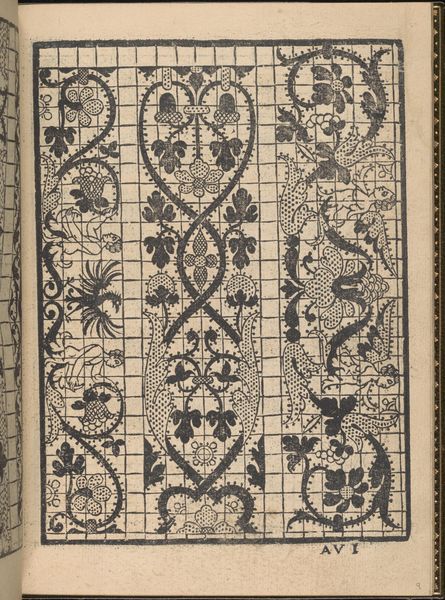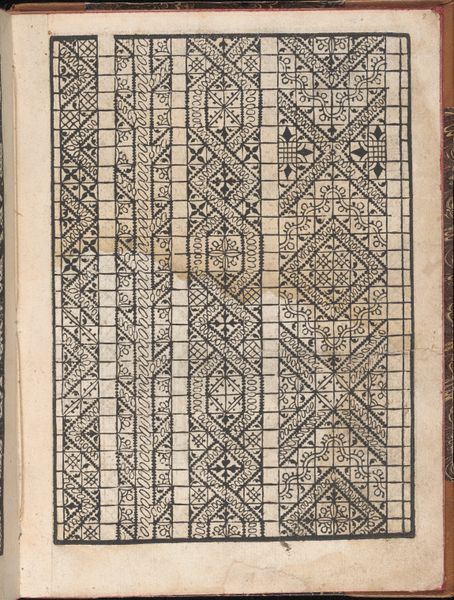
Spechio di pensieri delle belle et Virtudiose donne, page 2 (verso) 1546
0:00
0:00
drawing, print, paper, woodcut
#
drawing
# print
#
book
#
pattern
#
paper
#
11_renaissance
#
geometric
#
woodcut
#
islamic-art
#
italian-renaissance
Dimensions: Overall: 8 1/16 x 5 7/8 in. (20.5 x 15 cm)
Copyright: Public Domain
Curator: The dense geometric patterning immediately gives the impression of order and complexity. It's quite captivating. Editor: Indeed. This page comes from "Specchio di pensieri delle belle et Virtudiose donne," which translates to "Mirror of Thoughts of Beautiful and Virtuous Women." Printed in 1546 by Matteo Pagano, it's a woodcut print on paper. Imagine the role of printmaking in distributing this imagery throughout society. Curator: A mirror! Fascinating. The book title makes me wonder about the intent of the repeating geometric forms. What would these patterns evoke for its 16th-century audience? Almost hypnotic. There's definitely something almost talismanic in the repetition. Editor: It’s interesting to see pattern books gain traction, and its circulation speaks to shifts in gender roles, of female readership who found pleasure in such craft work as an extension of art in the domestic setting. It also reflects a moment in publishing where design was no longer the strict purview of elites. Curator: Given its date of creation, at the height of the Italian Renaissance, one is immediately prompted to observe that these interlacing motifs and grids, aren’t, say, classical. We might even label the design with something approaching an Islamic visual framework. Editor: Precisely. Historians see influences and trade occurring between Italian states and the Ottoman Empire. These visual cues are part of that exchange, as objects and art are consumed as part of courtly fashion. Curator: Do you suppose wearers felt a cultural tension adorned with patterns we would understand now as clearly “other?” Or did these imports convey something more palatable? Editor: I believe objects always serve more purposes than the sum of their origins or use. The incorporation of different pattern books became symbolic as an emblem of class distinction and wordly cosmopolitanism, an adoption or a fashion practice that signified broader, even imperial ambitions. Curator: A fashion and class that continue, if somewhat subversively. Thank you! It is always important to explore continuities and connections, both symbolic and social, that exist between humans then and now. Editor: My pleasure. Seeing the pattern book today allows us to reconsider not just the beautiful item itself, but the ripple effect objects can cause.
Comments
No comments
Be the first to comment and join the conversation on the ultimate creative platform.
